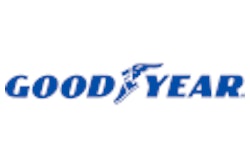TCA names winning drivers
A dream came true March 10 in Orlando, Fla., for Wayne Lowe, an owner-operator leased to FFE Transportation Services of Lancaster, Texas. During the Truckload Carriers Association’s annual convention, Lowe was named TCA Owner-operator of the Year and drove home in a new International LoneStar with a Cummins ISX 550 hp engine, an Eaton transmission and Goodyear G300 series Fuel Max tires.
An owner-operator with FFE for 42 years, Lowe has 4.5 million accident-free miles. Clark Lett, leased to Dart Transit, Eagan, Minn., took second place, followed by Gerald Clouse, also leased to Dart. Second- and third-place winners took home cash and other prizes. The contest is co-sponsored by International Truck and Engine and Overdrive.
James Loveland, a driver for WSE Transportation, LLC in Elm Springs, Ark., was named TCA Company Equipment Driver of the Year. Loveland, who has driven 1.6 million accident-free truckload miles, received a Cummins engine-powered Dodge Ram pickup. Truckers News co-sponsors the contest.
The winners are chosen based on performance, safety, efforts to enhance the image of the trucking industry and positive contributions to the community where they live.
To be eligible, applicants had to meet certain minimum criteria, including having one million consecutive, accident-free miles and being employed by or leased to a TCA-member company.
Lowe will be featured in the May Overdrive. Loveland will appear in the May Truckers News.
– Linda Longton
Agency urges fatigue reduction plans
The Teamsters, Public Citizen, Advocates for Highway and Auto Safety, and the Truck Safety Coalition asked an appeals court March 9 to review the latest hours-of-service rules. The groups also sent a letter to U.S. Transportation Secretary Ray LaHood asking him to begin work on a new regulation.
“We have taken this action with the conviction, based on research and scientific data, that longer driving and working hours are unsafe and promote driver fatigue,” the letter said.
That same week, the American Trucking Associations filed a motion to intervene in the legal challenge. Having participated in the administrative process and the prior court cases, ATA says it seeks the right to intervene to protect the interests of its motor carrier members.
Under the final rule, commercial motor vehicle drivers may continue to drive up to 11 hours within a 14-hour non-extendable window from the start of the workday, following at least 10 consecutive hours off duty. And motor carriers and drivers may continue to restart calculations of the weekly on-duty limits after the driver has at least 34 consecutive hours off duty. The 11-hour and 34-hour rules were at the heart of Public Citizen’s second challenge to the hours rules.
ATA says that based on the groups’ petition for reconsideration, it expects the groups will argue that scientific studies do not support the retention of the 11th hour of driving and 34-hour restart components. ATA says it believes that FMCSA “has done an outstanding job explaining the scientific underpinnings of its decision to retain the HOS provisions” and that positive real-world safety records, experienced since 2004 under the revised HOS rule, also bolster the defense of the ruling.
– Staff reports
Freight outlook remains dismal
FTR Associates said Feb. 24 its mid-month North American Commercial Truck and Trailer Outlook flash report showed a further weakening in freight and equipment demand.
With economic activity on pace to worsen in the first quarter from the deep declines already registered in the fourth quarter of 2008, FTR said the industry is experiencing sharp drops in freight volume equal to the very low levels of the 1982 recession. FTR expects year-over-year tonnage freight drops to bottom at negative 10.3 percent in the second quarter before beginning a slow rise to a still stressful negative 6.6 percent in the fourth quarter.
“The continued economic deterioration puts us on course for a minus 10 percent freight year – the worst market in a generation,” said Eric Starks, president of Nashville, Ind.-based FTR.
– Staff reports
Daimler opens Freightliner plant in Mexico
When Daimler Trucks North America announced in December 2006 it would build a Class 8 truck manufacturing plant in Saltillo, Mexico, the company wanted the additional capacity to meet demand it couldn’t meet at the time.
Now that the plant is open, the truck maker has ample capacity but few customers to take trucks it produces in the current economic collapse.
In late February, DTNA officially opened the 1.3 million-square-foot plant on 740 acres in northern Mexico, about 200 miles from the Texas border. The state-of-the-art plant has capacity to build 30,000 heavy-duty trucks annually, although the output is eight trucks daily now increasing to 12 to 15 a day by April.
The factory was designed to accommodate production of Freightliner Cascadia and Sterling heavy-duty trucks, but DTNA pulled the plug on the Sterling brand last October. The result is the sophisticated plant designed and created with the latest innovations from Daimler personnel and factories around the world with plenty of floor space to take care of growth whenever the North American truck market rebounds.
When in full production over two shifts, the plant will employ about 1,600 line personnel and managers. Currently, about one-third that many are working on a single shift.
In a public-private partnership with the Mexican federal and local government, Daimler invested $300 million in the plant to be ready when the market turns.
– Max Kvidera
Volvo quantifies 2010 SCR surcharge
Last month, Volvo Trucks North America boldly announced its trucks with EPA 2010 emissions reduction technology will include a surcharge of $9,600. This cost comes from the new selective catalytic reduction technology necessary to meet the strict new emissions standards for heavy-duty trucks, which take effect Jan. 1, 2010.
Unofficial estimates for SCR surcharges among heavy-duty engine makers have ranged from $5,000 to $10,000.
“Our emissions reduction technology for 2010 will bring immediate benefits for the air we breathe without using emissions credits, while at the same time significantly improving fuel economy for our customers,” said Scott Kress, senior vice president, sales and marketing. “Volvo Trucks will achieve near-zero emissions of NOx (nitrogen oxides) with selective catalytic reduction.”
The surcharge will apply to new trucks built with Volvo D11, D13 and D16 engines, as well as those with the Cummins ISX. All of the engines will be equipped with SCR aftertreatment. The new technology also includes the development of advanced onboard diagnostics systems required by the new emissions regulations.
– Staff reports
Truck tonnage index rises 3% in January
The American Trucking Associations’ advanced seasonally adjusted For-Hire Truck Tonnage Index climbed 3 percent in January 2009, marking only the second month-to-month increase in the last seven months. Still, the gain did little to erase the revised 7.8 percent contraction in December 2008.
In January, the seasonally adjusted tonnage index equaled just 104.7, its second-lowest level since October 2002. In January, the non-seasonally adjusted index fell 4.4 percent from the previous month to 97.2. ATA recently revised the seasonally adjusted index back five years as part of its annual revision. Compared with January 2008, the index declined 10.8 percent, which was slightly better than December’s 12.5 percent year-over-year drop.
ATA Chief Economist Bob Costello said that there was no reason to get excited about January’s 3 percent month-to-month improvement. “Tonnage will not fall every month, and just because it rises every now and then doesn’t mean the economy is on the mend,” he said.
– Staff reports
Cross-border project may take new form
President Obama has signed a bill ending the 18-month-old cross-border trucking program with Mexico, but initiated efforts to meet North American Free Trade Agreement obligations.
On March 11, Obama signed the 2009 Omnibus Appropriations bill, which included a provision to end the Department of Transportation’s trucking project, which was to allow 100 Mexican carriers to do business beyond the border zone in the United States, and a reciprocal number of U.S. carriers to do the same in Mexico.
However, a DOT statement said, “The president has tasked the Department of Transportation to work with the U.S. Trade Representative and the Department of State, along with leaders in Congress and Mexican officials, to propose legislation creating a new trucking project that will meet the legitimate concerns of Congress and our NAFTA commitments.”
– Jill Dunn
Trucking jobs decline 2.5% in February
Continuing a string of unprecedented percentage decreases, the trucking industry lost 33,400 employees on a seasonal basis in February – a 2.5 percent drop from January, according to preliminary figures released March 6 by the Bureau of Labor Statistics.
The 33,400 trucking jobs lost in February represent 5.1 percent of the net 651,000 nonfarm payroll jobs lost. And the rate of decline in trucking employment in February far exceeds that of the 0.5 percent employment decline in the overall economy.
Trucking employment was down 1.8 percent in January, 1.3 percent in December and just less than 1 percent in November. Each decline was the highest recorded monthly percentage drop at the time except for April 1994 during a Teamsters strike. Since October, trucking employment is down 6.4 percent.
– Avery Vise
EPA seeks applications for clean diesel funds
The U.S. Environmental Protection Agency on March 5 issued solicitations for more than $200 million in grants and loans under several separate programs aimed at reducing emissions from diesel engines.
Congress included $300 million in funding for diesel emissions reduction in the American Recovery and Reinvestment Act – more commonly known as the economic stimulus package – it enacted in February.
Most of the funds – $156 million – are dedicated to grants to be awarded under the national clean diesel funding assistance program. Another $30 million will go to the SmartWay Clean Diesel Finance Program, which will support the creation of national, state or local innovative clean diesel financial programs. Such programs include those where the loan recipient receives a financial incentive – such as better than regular market rates or conditions – for the purchase of retrofitted vehicles or equipment.
– Staff reports









